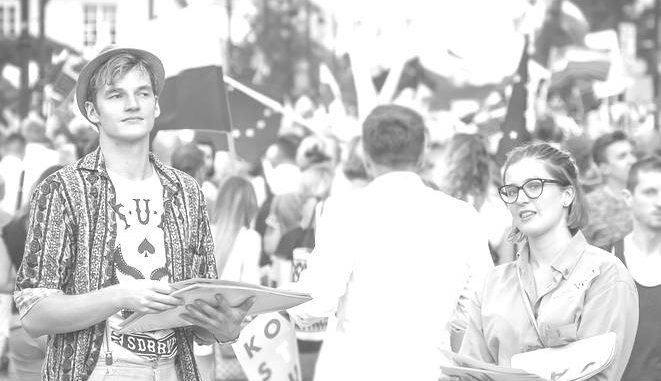
Scandinavia is seen as a haven of tolerance. That reputation is wearing thin in Denmark
Victoria Canning is Lecturer in Criminology at The Open University
Alice Minor is a project worker at DIGNITY – Danish Institute Against Torture
For a country steeped in the rhetoric of rights, Denmark’s treatment of people seeking asylum has been its gradual fall from grace
Beyond the peripheries of the opulence of Nyhavn and The Little Mermaid, two hours from the centre of Copenhagen, sits a former psychiatric hospital that is now ‘home’ to around 300 people awaiting refugee status in Denmark.
The centre has an ironic beauty – like much of the Danish countryside, it sits close to forest, lakes and fields. After a month of visiting women living there, the irony becomes clear: there is little beauty in languishing in nothingness, where almost nothing exists to occupy ones months or even years. Access to communities outside of the ‘camp’, or asylum centre, is limited by poverty, spatial exclusion and – for some at least – the depletion of morale that comes with the realisation of time wasted.
Dissolving rights
With its regular place in the top spots in indices of happiness, gender equality and even as one of the ‘best countries for women to live’, Denmark has been the envy of many of its Southern European neighbours for decades. As 2015 progressed, and Denmark’s approach to refugees became ever more restrictive, the mask of one of Scandinavia’s key power players in human rights embraced a monumental slip.
The now infamous jewellery law, introduced in 2016, allowing police to seize cash and jewellery from immigrants, was followed this year with the viral image of Immigration Minister Inger Støjberg smiling triumphantly holding a cake with a ‘50’ candle. Her celebration marked the 50th legislative amendment restricting migrant entry to Denmark and the rights of non-citizens in Denmark. Whilst the death toll in seas around Southern Europe rose over 10,000 in two years, Støjberg represented contemporary Denmark’s growing animosity towards people who aren’t white Danish citizens.
Women on the peripheries
Many of the women seeking sanctuary we worked with had perceived Denmark as a ‘good place for women’ prior to arriving in Denmark and are shocked by the reality of sharpened internal borders. As Faiza told us, ‘When I was a little girl I thought Europe was a place where women were respected. That’s what they told us. Now that I am here I can say that no human rights are protected. I do not have rights’. Based on her experience, this is a fair assessment – having arrived with a husband with Danish residency and separating after a period of abuse, Faiza has spent almost two years languishing in the centre with utterly nothing to do. This place is officially intended to care for refugees in waiting. But its lack of resources, insecurity of life prospects, and far-flung geographical setting tangibly wear away at the person’s will to carry on.
The spatial distancing of the centres – where some people live for years, sometimes moved from one periphery to another – makes building relationships outside of the asylum community almost impossible. It regularly separates people seeking asylum who are each other’s support networks. The cost of train tickets eats significant chunks out of people’s ‘pocket money’, the infantilising term for weekly allowance. Some organisations work relentlessly to offer financial support for transport. Still, women with children often remain informally segregated by a lack of childcare, and increased depression and anxiety stemming from insecure immigration status. Even the will to engage with the ‘outside world’ can be gradually eroded by the feeling of containment that saturates the camp. As Abayomi – a survivor of sexual trafficking – told us, ‘in asylum you will not know your whereabouts, where you are going to. But they just got you like prisoners in the camp’.
The Final Nail
While Abayomi’s claim might seem polemical, the reality of prison like conditions is extended into the constant threat of a last move to Sjælsmark Deportation Camp, operated by the Danish Prison and Probation Service. At Sjælsmark, a constant spectre of insecurity is embedded in the prison-like architecture, and banality is integral to reducing people’s desire to stay. Unlike some of the asylum centres, the explicit goal, as one employee noted, is ‘motivating people to depart’. Recurring activities are restricted to deliberately discourage close relationships. One example given to us was football – ‘You can play football but you cannot play in team that goes to tournaments. So you can have a football and play in the field, but you can’t have all of that belonging to a club that goes to a tournament’.
No accident
The suffering – and surviving – we see at the asylum centres is no tragic by-product of war and poverty. It is the consequence of explicit choices by the Danish government to legislate against human rights. Women bear the brunt. Women seeking asylum are disproportionately affected by violence, including those from so-called safe countries such as Albania, but the threat to their lives is typically not considered valid grounds for asylum.
As field researchers, we get to leave. But the women we work with continue to languish, rights all but eradicated.


Be the first to comment